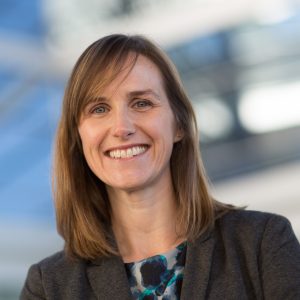Study raises concerns about timely follow-up to positive mammogram for the uninsured
November 7, 2016
Uninsured women under age 65 who received their mammogram at community screening clinics in North Carolina were less likely to get follow-up within a year of a positive mammogram. They also had higher odds of missing a 60-day window for follow-up care, according to a study by senior author Louise Henderson, PhD, and colleagues.

Dr. Louise Henderson
Henderson is an adjunct assistant professor of epidemiology in the UNC Gillings School of Global Public Health. She also is an assistant professor in the Department of Radiology in UNC’s School of Medicine and is a member of the Lineberger Comprehensive Cancer Center.
The full article, titled “Insurance-Based Differences in Time to Diagnostic Follow-up after Positive Screening Mammography,” was published online Nov. 1 by Cancer Epidemiology, Biomarkers & Prevention.
“If we’re going to use mammography to screen women for breast cancer, we need to make sure that women with a positive result receive the needed follow-up care, regardless of insurance,” said Henderson. “As expected, women without insurance may need more support to make sure they get timely follow-up care.”
Approximately 40 million mammography exams are conducted in the United States each year. The U.S. Preventive Service Task Force, citing studies that link mammography exams to a reduction in breast cancer deaths, recommends that women aged 50 to 74 years have a mammogram every other year. The American Cancer Society advises women to undergo annual screening starting at age 45, and adds that women between ages 40 and 44 should have the opportunity to begin annual screening as well.
Previous studies have found that one in 10 mammograms require additional follow-up, although the majority do not result in cancer diagnosis. Another study found that a three-to-six-month delay to treatment from symptom onset was linked both to larger tumor sizes at diagnosis and to lower survival rates.
In the newly published study, researchers wanted to know if insurance influenced how quickly patients were able to get a follow-up appointment after a positive mammogram. They analyzed data from the Carolina Mammography Registry, a collection of breast imaging information for patients who have gone to community radiology facilities – excluding academic centers — in N.C. They used data gathered between 1995 and 2010 to study the cases of 43,026 women aged 40 years and older who had a positive screening mammogram.
Their analysis found that women younger than age 65 with no insurance had 60 percent higher odds of not getting follow-up care within the recommended 60 days of a positive mammogram. Even after a year, these women were 53 percent less likely to have received follow-up.
In terms of overall numbers, 18 percent of women under age 65 without insurance did not get follow-up within 60 days, compared to 11 percent of women in that age group with private insurance.
“We found that there are women who aren’t getting follow-up after a positive screening mammogram, and we need to understand why so we can determine what to do about it,” Henderson said. “It does seem to vary by insurance, based on some of the data. While it is possible that women could have received care outside of the group of community clinics that participated in our study, we don’t know if this is the case.”
There are resources available to help women gain access to mammograms through the Centers for Disease Control and Prevention’s National Breast and Cervical Cancer Early Detection Program, but Henderson said there could be a need for additional aid.
Danielle Durham, PhD, the study’s first author and an alumna of the Department of Epidemiology at the Gillings School, highlighted the need for more research to determine if any of the women in the study went for follow-up outside of the study’s catchment area.
“It’s important to remember that this is a particular population of people who have sought care,” said Durham, who is now a cancer prevention fellow at the National Cancer Institute. “It would be interesting to see if these trends would be replicated in other populations in the U.S.”
In addition to Henderson and Durham, other study authors associated with the Gillings School include Whitney R. Robinson, PhD, assistant professor of epidemiology, Stephanie B. Wheeler, PhD, associate professor of health policy and management, J. Michael Bowling, PhD, research associate professor of health behavior and adjunct research associate professor of biostatistics, and Andrew F. Olshan, PhD, Barbara Sorenson Hulka Distinguished Professor in Cancer Epidemiology and chair of the Department of Epidemiology.
The study was funded by the National Cancer Institute.
Gillings School of Global Public Health contact: David Pesci, director of communications, (919) 962-2600 or dpesci@unc.edu
